Click on image to enlarge.

|
Title: Cranberry Lake Preserve, New York, 14 October 2004
Habitats of the 165-acre Cranberry Lake Preserve, NY, include an abandoned quarry and sandy beach, forest, lakes, and vernal ponds.
Biota of the Preserve includes about 148 bird species, 30 butterfly species, 54 damselfly and dragonfly species, 123 fungus species, 395 plant species, and hundreds of species in other taxa (based on Cranberry Lake Information Bulletins).
I visited Cranberry Lake Preserve, NY, in early May 2003 and on 7 and 14 October in 2004.
In May, many plants were starting to unfurl their leaves, bloom, or both.
In October, some plants were flowering, many were fruiting, and many had senescing leaves.
Some of the biota and other things that I saw in the Preserve on 14 October 2004 are illustrated below.
To find more information about Cranberry Lake Preserve on this Website, please enter “Cranberry Lake Preserve” in the box on this Website’s homepage and click on “Submit search.”
For more yet more information, please see: http://www.westchestergov.com/parks/NatureCenters/CranberryLake.htm.
E. M. B.
Please, click on images to enlarge them.





Figures 1–3.
Actea pachypoda (White Baneberry = Doll’s Eyes) (Ranunculaceae).
Figures 4–5.
An interesting car body still in the Preserve.





Figure 6.
Pinus sylvestris (Scot’s Pine, cones, alien species) (Pinaceae).
Figures 7–8.
Chimaphila maculata (Spotted Wintergreen = Pipsissiwa) (Ericaceae).
Figures 9–10.
Cypripedium acaule (Stemless Ladyslipper) (Orchidaceae) with missing parts, possibly due to browsing of
Odocoileus virginianus (White-tailed Deer) (Cervidae).





Figure 11.
Clethra alnifolia (Sweet Pepperbush, fruit) (Clethraceae).
Figure 12.
Fallen leaves.
Figures 13–15.
Granite Gneiss in the quarry.





Figures 16–19.
Granite Gneiss in the quarry.
Figure 20.
Pinus strobus (White Pine) (Pinaceae).





Figures 21–22.
Pinus strobus (White Pine) (Pinaceae).
Figures 23–25.
Malus cv. (crab apple) (Rosaceae).





Figures 26–30.
Celastrus orbiculatus (Asian Bittersweet, alien species) (Celastraceae).





Figures 31–33.
Celastrus orbiculatus (Asian Bittersweet, alien species) (Celastraceae).
Figures 34–35.
Artemisia vulgaris (Mugwort, alien species) (Asteraceae).





Figures 36–38.
Artemisia vulgaris (Mugwort, alien species) (Asteraceae).
Figures 39–40.
Polygonum cuspidatum (Japanese Knotweed, alien species) (Polygonaceae).
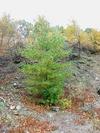
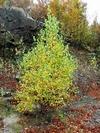



Figure 41.
Pinus strobus (White Pine) (Pinaceae).
Figures 42–44.
Betula populifera (Gray Birch) (Salicaceae).
Figure 45.
Solidago bicolor (Silver-rod) (Asteraceae).





Figure 46.
Aster sp. (wild aster) (Asteraceae).
Figure 47.
Aster sp. (wild aster) (Asteraceae).
Figure 48.
Aster sp. (wild aster) (Asteraceae).
Figure 49.
Aster sp. (wild aster) (Asteraceae).
Figure 50.
Schizachyrium scoparium (Little Bluestem) (Poaceae).

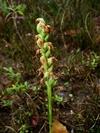
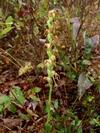
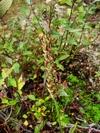

Figure 51.
Schizachyrium scoparium (Little Bluestem) (Poaceae).
Figures 52–54.
Spiranthes cernua (Nodding Lady’s Tresses, fruit) (Orchidaceae).
Figure 55.
Phragmites australis (Common Reed) (Poaceae).





Figures 56–57.
Phragmites australis (Common Reed) (Poaceae).
Figure 58–60.
Plantago lanceolata (English Plantain, alien species) (Plantaginaceae).





Figure 61.
Rhus radicans (Poison Ivy) (Anacardiaceae).
Figures 62–63.
Aralia nudicaulis (Wild Sarsaparilla) (Araliaceae).
Figure 64.
Hosta sp. (hosta) (Hostaceae).
Figure 65.
South Pond.





Figures 66–70.
South Pond.





Figures 71–72.
South Pond.
Figure 73.
Rhododendron periclaminoides (Pinkster Flower) (Ericaceae).
Figure 74.
Possibly
Vaccinium corymbosum (Highbush Blueberry) (Ericaceae) which is about 15 feet tall.
If this plant is
Vaccinium corymbosum, it is the tallest one that I have seen.
Figure 75.
Possibly
Quercus coccinea (Scarlet Oak) (Fagaceae).
This specimen might be a hybrid of
Quercus coccinea and another oak species.





Figure 76.
Alnus serrulata (Smooth Alder, catkins) (Betulaceae).
Figure 77.
Alnus serrulata (Smooth Alder, fruits) (Betulaceae).
Figure 78.
Alnus serrulata (Smooth Alder, catkins) (Betulaceae).
Figures 79–80.
Clethra alnifolia (Sweet Pepperbush, fruit) (Clethraceae).



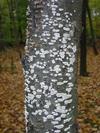
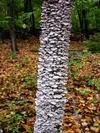
Figure 81.
Cranberry Lake.
Figure 82.
Osmunda regalis (Royal Fern) (Osmundaceae).
Figure 83.
Cranberry Lake.
Figures 84–85.
Fungus probably
Trametes versicolor (Turkey-tail Fungus) (Polyporaceae).





Figure 86.
Fungus probably
Trametes versicolor (Turkey-tail Fungus) (Polyporaceae).
Figure 87.
Fungi.
Figures 88–89.
Viburnum acerifolium (Mapleleaf Viburnum) (Caprifoliaceae).
Figure 90.
Possibly
Pyrola rotundifolia (Roundleaf Pyrola) (Ericaceae).



Figure 91.
Canis latrans (Coyote) (Canidae).
Figure 92.
Odocoileus virginianus (White-tailed Deer) (Cervidae), etc.
Figure 93.
Top shelf a skull of a
Ovis aries (Domestic Sheep) (Bovidae) (left) and a
Bos taurus (Domestic Cow) (Bovidae) (right); bottom shelf,
Odocoileus virginianus (White-tailed Deer) (Cervidae), etc.
update
template
�Copyright 2009 Georgetown University |




































































































